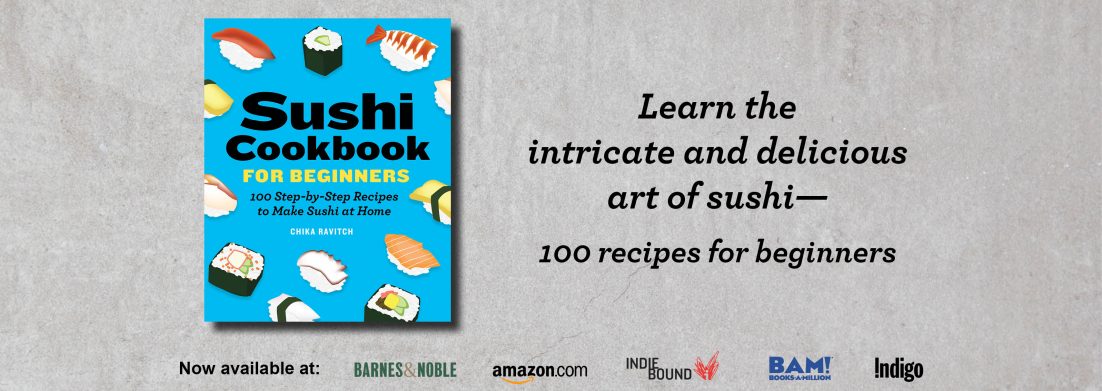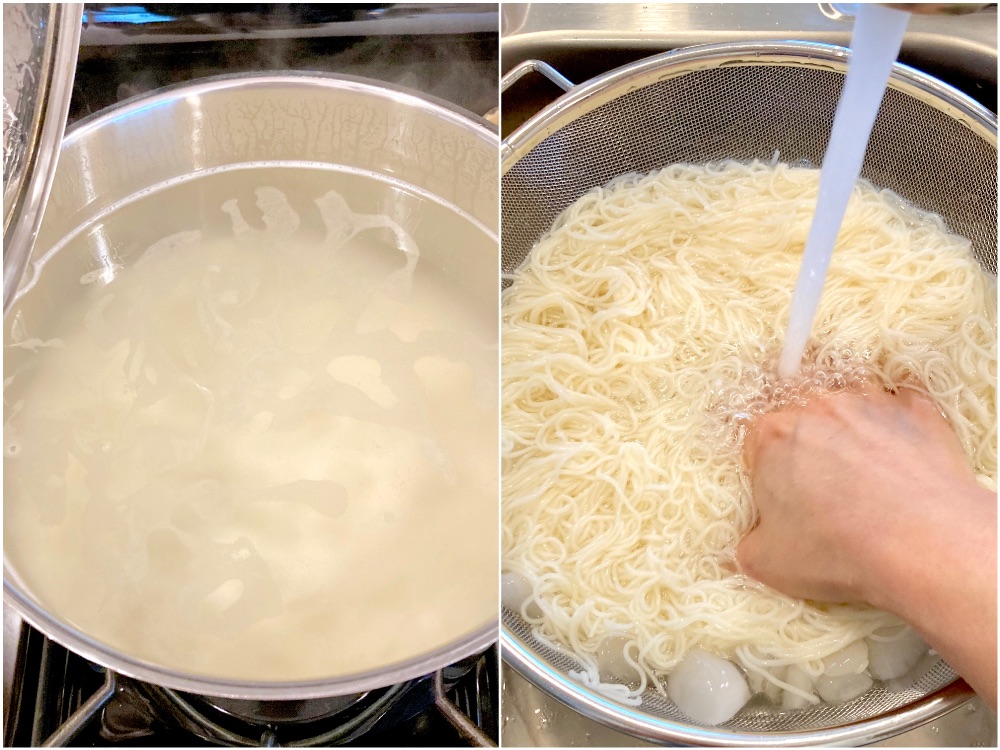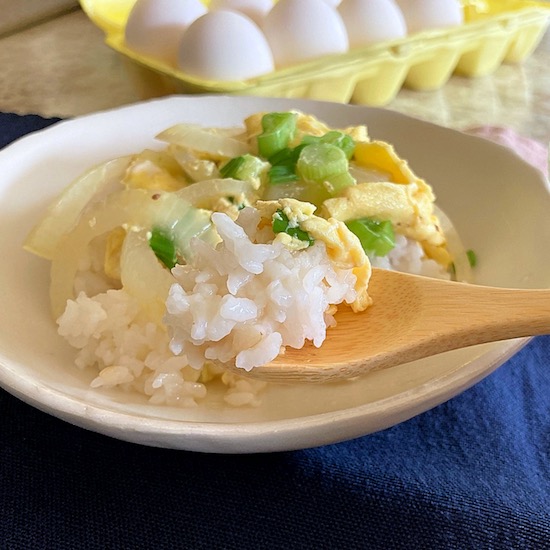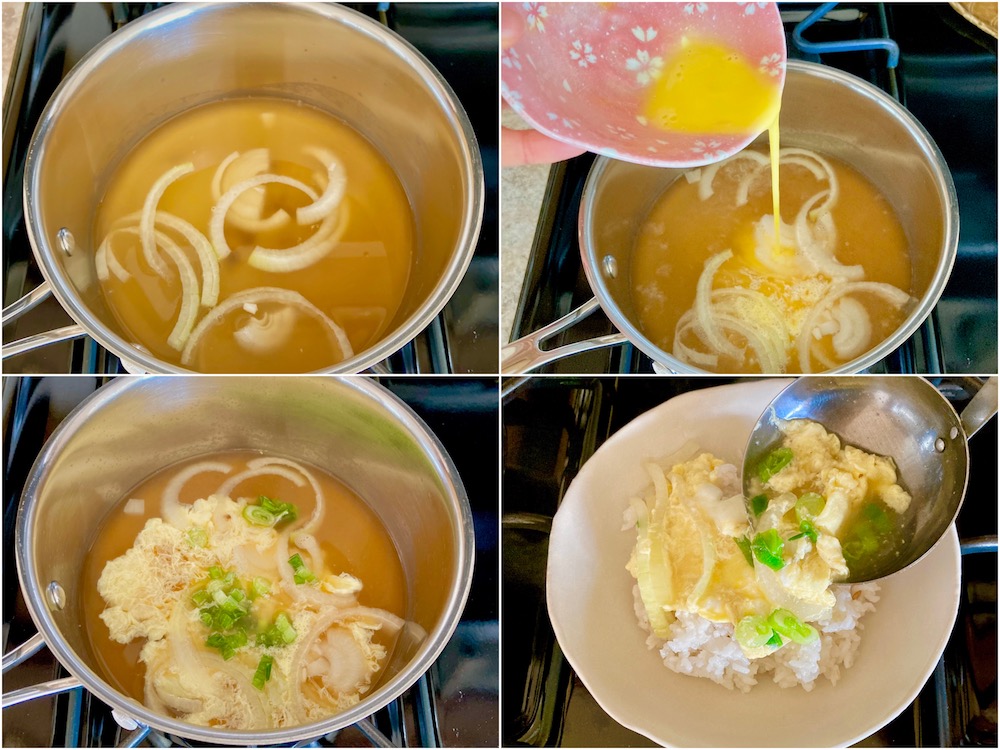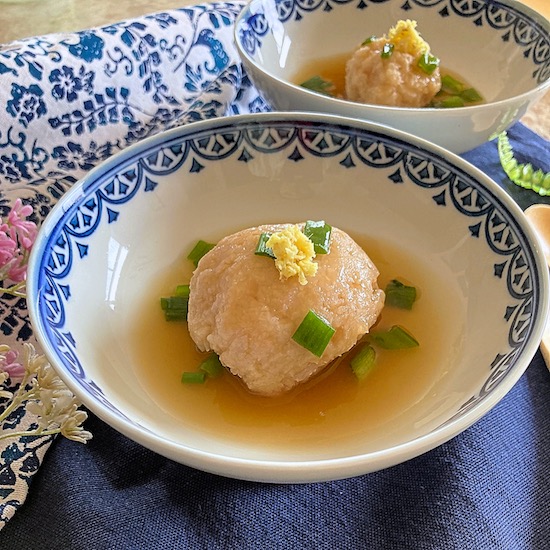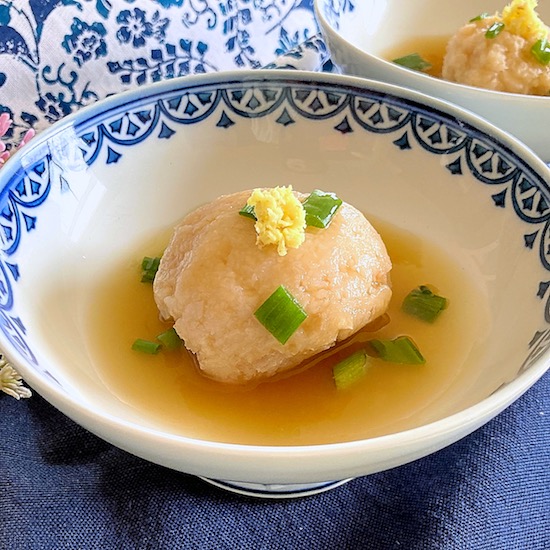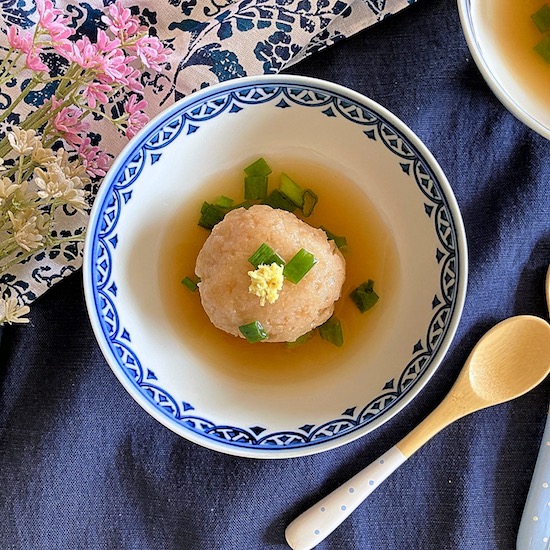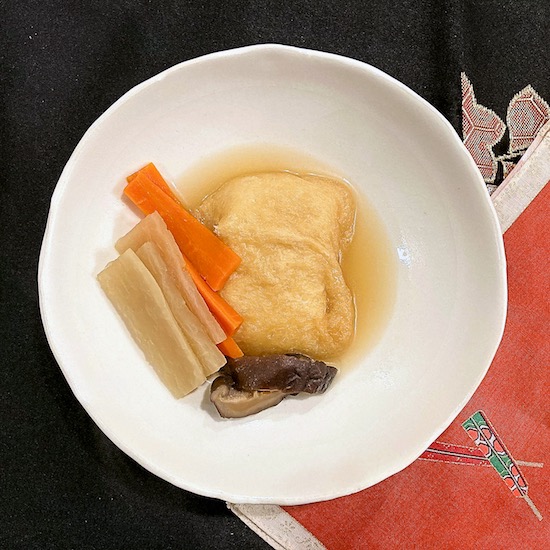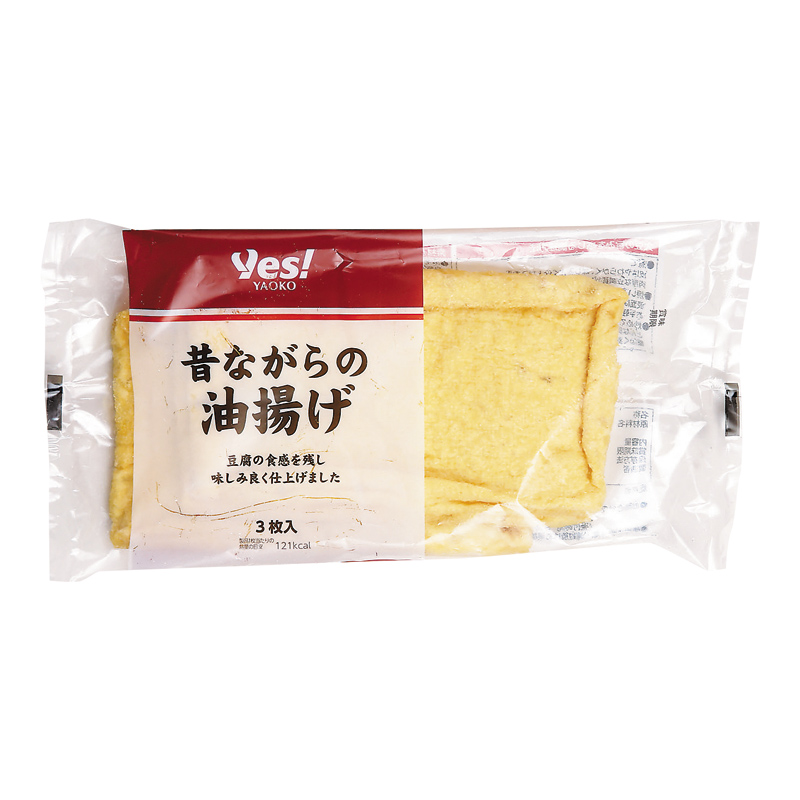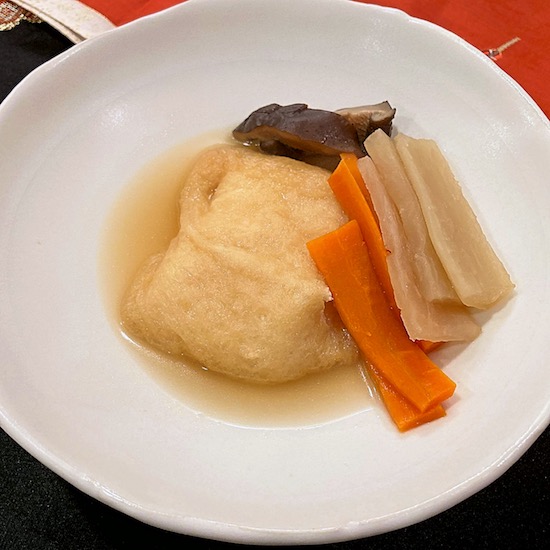Today I introduce you to “Pan-fried garlic chives and egg”, called Nira-Tama in Japanese.
It is a very common homemade dish and takes only 10 minutes to cook.
Garlic chives have a great garlic flavor as it is named. It is also called Chinese chives or Asian chives. In ancient times, garlic chives were used for medicinal purposes in East Asia because it is rich in nutrients.
Here is a tip for storing garlic chives. The chives are easy to wilt in the refrigerator. I highly recommend to froze it. Wash fresh garlic chives, dry them and put in a freezer bag. Use within one month.
Ingredients (servings 2)
- 4 beaten eggs
- 1 Tbsp SHIMAYA Kelp Dashi Powder (Vegetarian Soup Stock)
- 1 tsp Premium Artisinal Japanese Soy Sauce (Choose gluten-free one if necessary)
- Pinch of salt and pepper
- 1 Tbsp Kadoya 100% Pure Sesame Oil
- A bunch (about 4 oz) garlic chives, cut into 4-inch-length
The recipe is very easy and quick.

In a pan, heat sesame oil over medium heat and sautee garlic chives for 3 minutes. Pour the egg mixture to the pan and cook without stirring until the edges of the eggs are slightly cooked. Reduce the heat to low, using a spatula, gently gather the cooked part toward the center of the pan and spread the uncooked egg toward the edge of the pan. Fold the edges over onto themselves until cooked all the way through. This gives the dish a fluffy texture.
